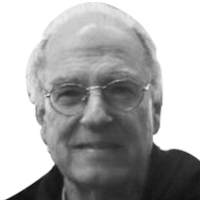SEOUL—The optics and imagery carried the day for North Korean leader Kim Jong Un and South Korean President Moon Jae-in on the site where the Korean War armistice was signed nearly 65 years ago.
It was a tightly scripted day in which body language counted for more than verbiage in the historic truce village of Panmunjom, but, for all the showmanship and flowery language, the two leaders skirted the one issue that President Donald Trump has said is essential for easing the sanctions and threats that he believes forced Kim to cross the North-South line.
It was not until the next to last paragraph that their Panmunjom Declaration for Peace, Prosperity and Unification of the Korean Peninsula got around to “the common goal of realizing, through complete denuclearization, a nuclear-free Korean Peninsula.”
Yes, they agreed “the measures being initiated by North Korea are very meaningful and crucial for the denuclearization of the Korean Peninsula.” No, they said nothing about the North’s nuclear and missile tests, much less did they offer any reference to the U.S. demand for “CVID”: complete, verifiable, irreversible denuclearization.
The Korean leaders deemphasized that imperative by emphasizing their pacific intentions, declaring that “there will be no more war on the Korean Peninsula” and “a new era of peace has begun.” They both gave an impression of complete dedication by declaring their “firm commitment to bring a swift end to the Cold War relic of longstanding division and confrontation, to boldly approach a new era of national reconciliation, peace and prosperity, and to improve and cultivate inter-Korean relations in a more active manner.”
Judging from visual impressions on all Korean television networks the summit was an incredible success from the moment Moon welcomed Kim with a handshake as he stepped across the Military Demarcation Line between the two Koreas. The sense of symbolism deepened with Kim’s unscripted gesture of leading Moon for a step back across the line to the northern side—a show of North-South unity.
Throughout the day, the theatrics continued. From the North-South line, Moon escorted Kim past South Korean troops, first a column dressed in the colorful garb of the ancient Chosun dynasty that fell to Japanese rule in 1910 and then smartly uniformed elite soldiers lined up on either side of a wide red carpet.
A band played as they walked up the steps of Peace House, the graceful building where they sat down on either side of a conference table, exchanging small talk before going into closed session for 100 minutes—the crux of the summit at which they covered such topics as road and rail transportation, reunions of families divided by the Korean War, even the reopening of a liaison office in the nearby Kaesong Industrial Complex. It was shut down by Moon’s predecessor, Park Geun-hye, whose impeachment and imprisonment led to Moon’s election last year.
In the afternoon Moon and Kim together planted a pine tree that had begun life as a seedling in 1953 when the Korean War ended.
Staff members on both sides seemed to have thought of everything: Moon shoveled dirt from Mount Paektu, the peak on the Chinese border that stands as the highest point on the Korean peninsula and the mythological birthplace of Kim’s father, Kim Jong Il. (He actually was born in Khabarovsk while the regime founder, Kim Il Sung, was serving as an officer in the Soviet army.) Kim in turn shoveled dirt from Mount Halla, the peak on the southern island of Jeju that is the highest point in South Korea.
Television cameras captured them strolling across a footbridge in a swampy area within the joint security area before they sat down on a bench for 30 minutes of what appeared to be altogether spontaneous conversation. Their expressions ranged from smiling to serious—but certainly there was no sign of anything but general agreement and the pleasure of each other’s company.
The differences only emerged when Moon and Kim stepped out of Peace House after signing their declaration. “We have reached a consensus on denuclearization,” Moon announced. “I declared I will work with Kim Jong Un for peace on the peninsula.”
Kim, standing beside him, said not a word about denuclearization, preferring to emphasize the possibilities for unification. “We share the same bond and belong to the same nationality,” he said. “We will learn from history.”
The day came to a fitting end when the wives of both of them joined them for a lavish dinner. It was not until the afternoon that word came that Kim’s wife, Ri Sol Ju, was coming down from Pyongyang. His younger sister, Kim Yo Jong, who had made such a splash at the Winter Olympics, had been around all day. She sat beside her brother and taking notes, a sign of her high pace in the ruling hierarchy.
Kim set his host, and millions watching on television at ease by remarking at the outset that Moon would not have to wake up in the morning worrying about missile tests and having to call a meeting of his national security council.
He even appeared conciliatory. “We haven’t carried out our agreements for ten years,” he said “If we are determined to work hard, wouldn’t it be better than before.”
So, the mood here in Seoul is one of relief and optimism, but also caution in the knowledge that the summit between Kim and U.S. President Donald Trump could change the mood and raise the stakes dramatically.






